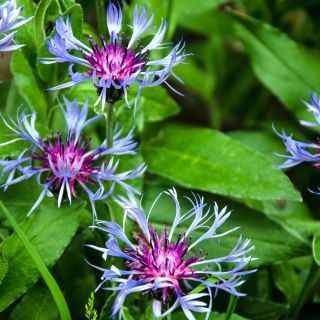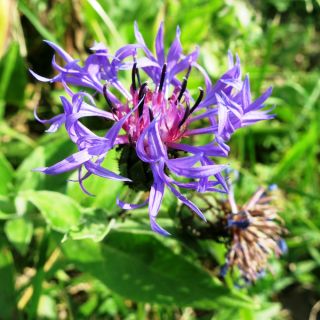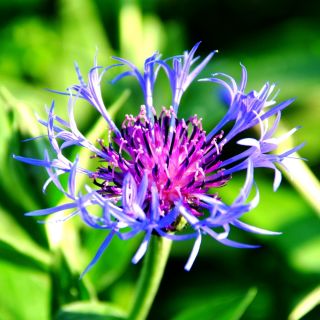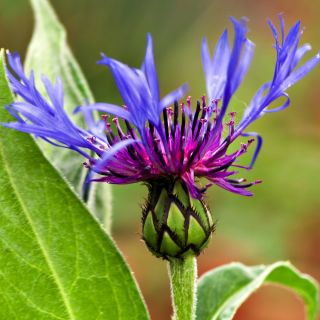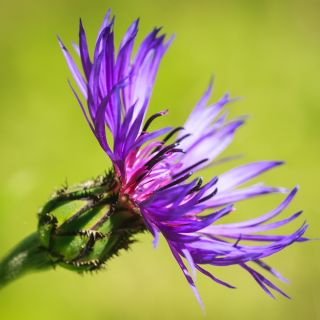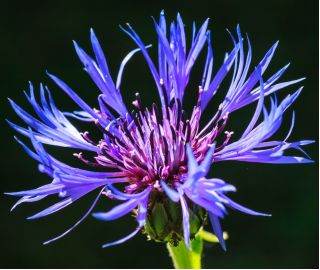The Mountain Cornflower, scientifically known as Centaurea montana, is a perennial plant that captivates with its striking appearance. With its tall, upright stems capped with blue flowers, it is perfectly suited for rock gardens, flowerbeds, and as a cut flower. Reaching heights of 30 to 50 cm, it forms dense clusters that can adorn any green space beautifully. The seeds of this plant are meticulously selected to ensure high quality. With fast and reliable delivery, shopping at Garden Seeds Market is a pure delight.
Sowing
The Mountain Cornflower can be sown directly into the ground. The seeds should be placed in pre-prepared soil, facilitating even distribution. It is advisable to lightly cover the seeds with a thin layer of soil to provide optimal conditions for germination.
Sowing Depth
Sow the Mountain Cornflower seeds at a depth of 0.5 to 1.5 cm. This depth allows for quick germination and proper root development, which is crucial for healthy growth.
Direct Sowing Period
When should you sow Mountain Cornflower seeds directly into the ground? The optimal time for sowing is from April to June. During this period, the soil is adequately warmed, promoting speedy germination.
Planting Time
The best time to plant Mountain Cornflower is in late summer, from August to September. This allows the plants sufficient time to establish roots before the onset of cooler days.
Plant Spacing
When planting the Mountain Cornflower, maintain a spacing of 30x30 cm. This distance provides the plants with ample space for development and helps avoid competition for nutrients.
Companion Planting
The Mountain Cornflower pairs well with other perennials with similar requirements, such as lavender, phlox, and catmint. Together, they create harmonious compositions that catch the eye.
Site Conditions
The Mountain Cornflower prefers sunny locations but can also thrive in partial shade. The soil should be well-drained and moderately moist, ideally with a neutral to slightly alkaline pH. It grows well in moderately fertile soils, but areas where water stagnates should be avoided.
Growing Tips
The Mountain Cornflower is a low-maintenance plant resistant to adverse conditions. Regularly removing spent flower heads encourages prolonged and more abundant blooming. During dry spells, additional watering is beneficial to prevent wilting. In autumn, cutting back the stems can promote better branching in the next season.
Plant Height
The Mountain Cornflower reaches a height of 30 to 50 cm, making it an excellent ornamental feature in the garden. Its height allows it to serve both as a focal plant and as a backdrop for shorter flowers.
Flowering Period
The Mountain Cornflower blooms from May to August, providing blue flowers for most of the growing season. This extended flowering period makes it a valued addition to flowerbeds and gardens.
Usage
The Mountain Cornflower is ideal for planting in flowerbeds, rock gardens, and as a cut flower. Its vividly blue flowers introduce a fresh and colourful element to any garden arrangement. Due to its durability, it is often used in bouquets and floral decorations.
Resistance to Diseases
This plant exhibits significant resistance to most diseases and pests, making it easy to cultivate. Even novice gardeners can enjoy its beauty without much difficulty.
Good to Know
The Mountain Cornflower attracts pollinators such as bees and butterflies, contributing to increased biodiversity in the garden. It's also worth noting that its flowers are edible and can be used as a garnish for dishes.
Why Buy from Garden Seeds Market
Shopping at Garden Seeds Market guarantees the highest quality seeds, rigorously tested in laboratory conditions. Fast and secure delivery ensures your ordered products arrive on time. The shop enjoys the trust of its customers, as evidenced by numerous positive reviews. Professional service and a wide range of products are additional advantages that encourage purchases here.
The packet contains 1 g of seeds. The packaging provides information on cultivation practices and the sowing expiry date.



